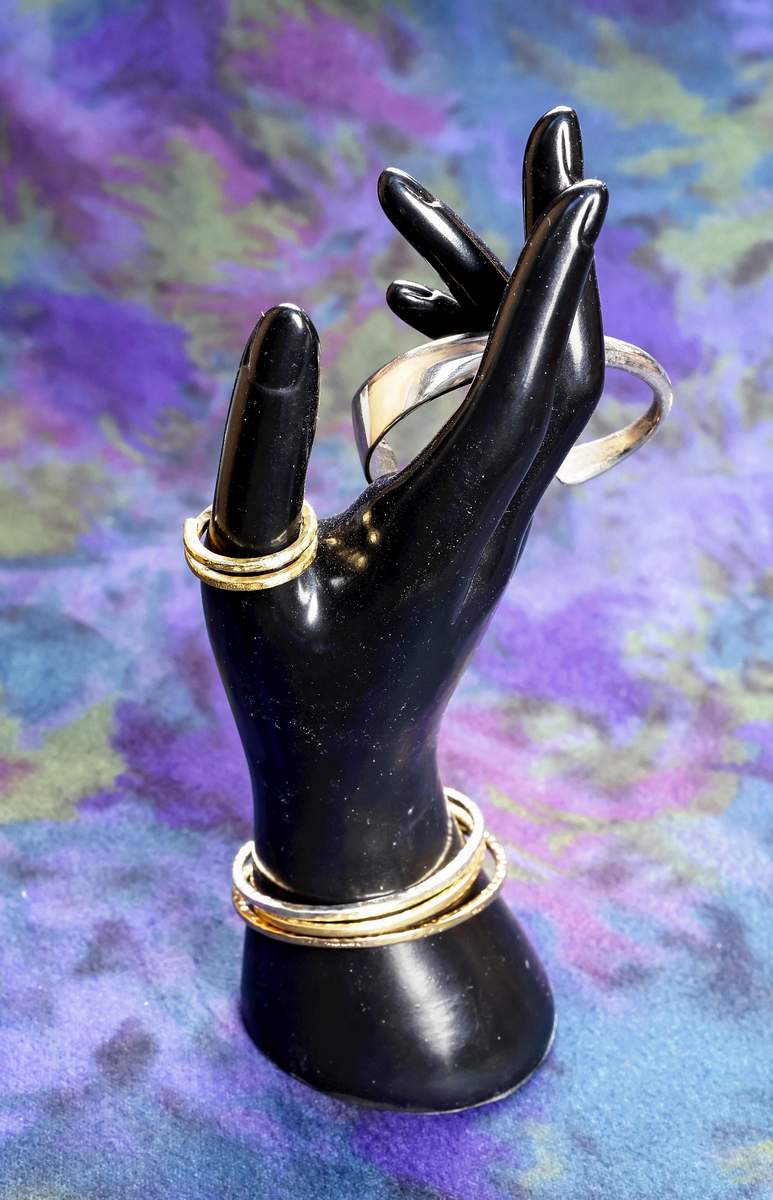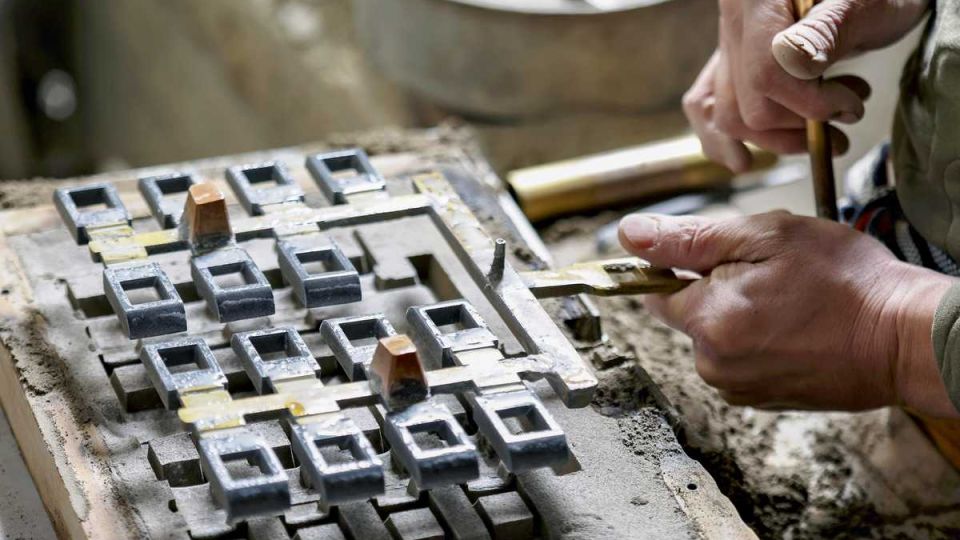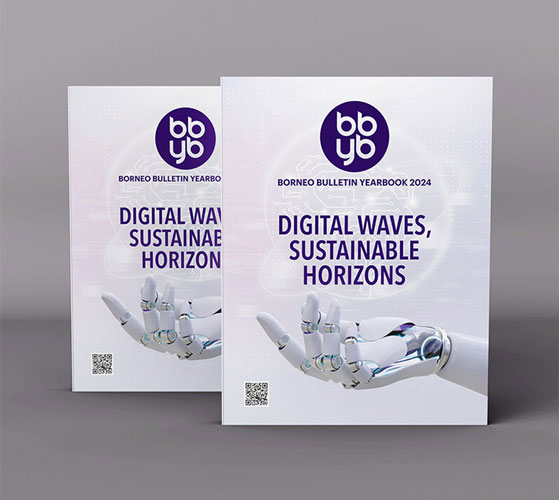TOKYO (ANN/THE JAPAN NEWS) – With its muted shine, brass is often strongly associated with practical items such as architectural hardware. However, brass also is used to make sculptures and ornaments, and its texture increases the depth of its colour over time, giving it an antique quality.
An alloy made from copper and zinc, brass is rust-resistant and easy to work with. It’s used to make many items, such as JPY5 coins, musical instruments and water taps.
The Shibazaki alloy foundry in Sumida Ward, Tokyo, uses brass to craft everything from trophy handles to building hardware such as door components. In recent years, the foundry has expanded its product range to include ornaments, accessories and other craft products. These have been developed under the RBrass brand.
Their adorable penguin ornaments with smooth bodies stand between two and four centimetres tall. They can be left to have their luster gradually fade over time or kept shiny with regular polishing.
These ornaments are heavier than expected. “The typical feel of brass gives off an impression of sophistication,” says Ryuta Shibazaki, manager of the foundry and a skilled metal caster.
He came up with the poses of the penguins by asking staff at the nearby Sumida Aquarium about the birds’ behavior and other features. Other animals in the lineup include ducks and dolphins. These products can be used as paperweights and chopstick rests.
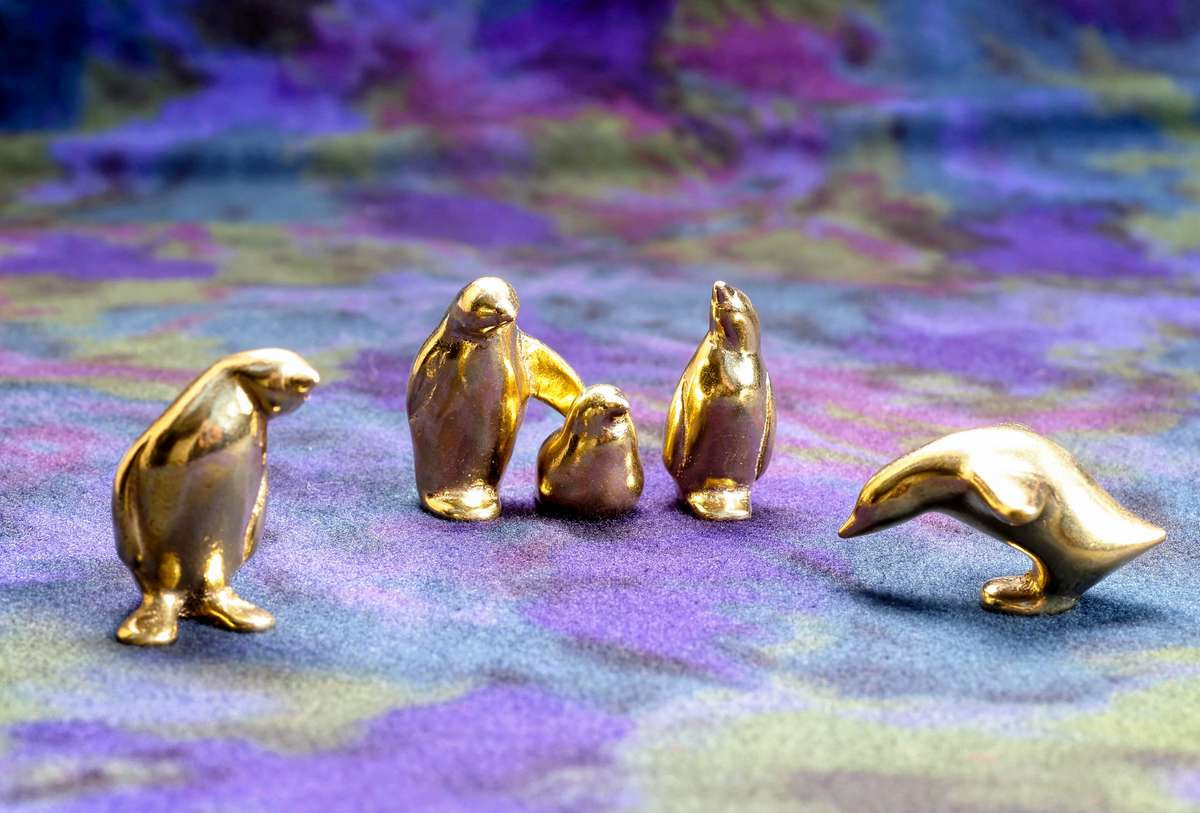
A traditional sand casting method is used to make these objects. Fine sand is densely packed together and then a cavity is made in the shape of the animal or other desired design. Molten brass at a temperature of at least 1,000 C is poured into the cavity. After the brass solidifies, the sand mold is broken away and removed. The finishing touches involve polishing the brass. “The quality of the finished product can differ depending on how tightly packed the sand is. I find that fascinating,” Shibazaki said.
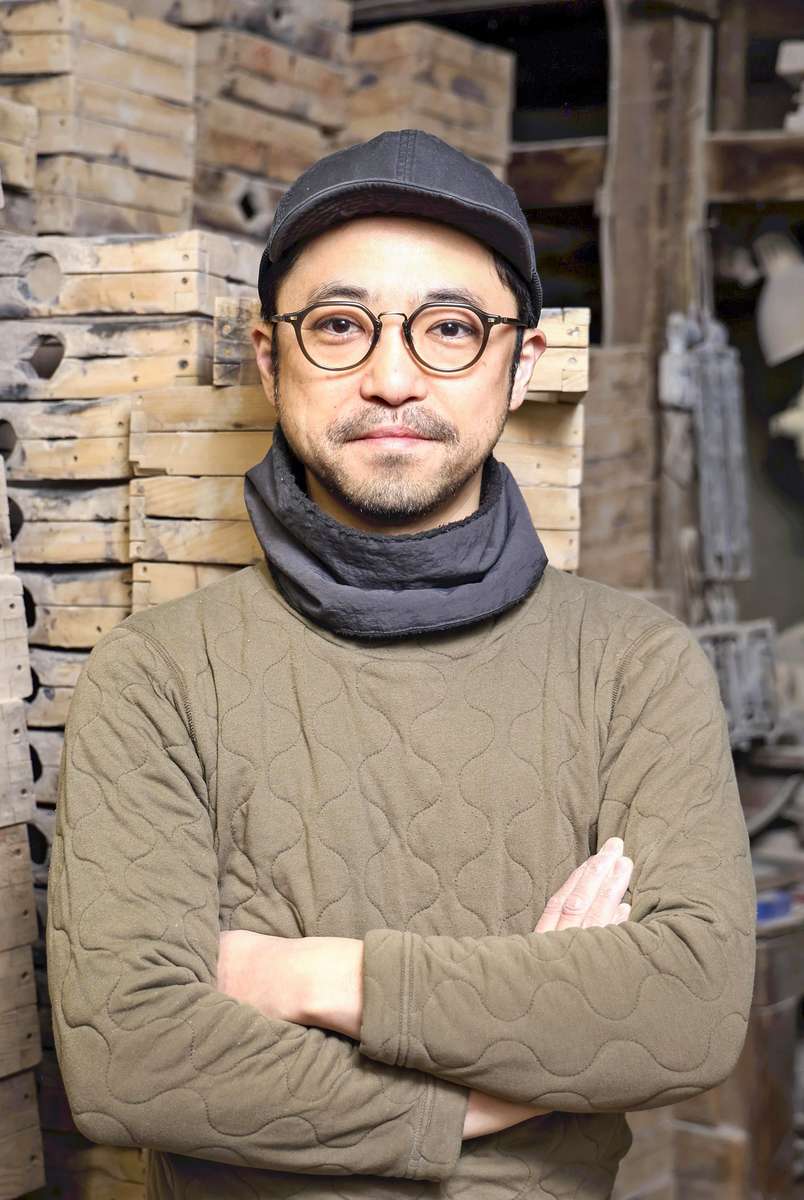
The sand in the molds can be reused multiple times, which fits the modern trend of increased recycling. Scrap items, such as old water taps, can also be used as raw materials for these products.
Shibazaki, 47, was born in Tokyo. Shibazaki’s grandfather and father were both craftsmen in the foundry, and he grew up watching them skillfully make brass items. He initially felt the job was too grueling, so he became a full-time employee at an import company. At 29, he decided to change careers and work at the foundry because he wanted to spend more time with his family.
The sand-casting method is not conducive to mass production, and the number of craftspeople in this field is reportedly declining. “I’d like to make more people aware of the charms of brass and preserve these traditional techniques,” Shibazaki said.
Selling new and vintage items
RBrass sells new items it produces and vintage items through its online store.
Brass mechanical pencils and ballpoint pens made in the ’60s and ’70s are weighty but popular due to their comfortable feel in the hand. Decorative letters, numbers and horse-shaped keychains add a chic touch when attached to a bag.
These were all original products from a long-time business client, also in the ward, that closed down in 2019. Since about 2020, the foundry has handled these items in addition to its own products. “The longer you use them, the better they get,” Shibazaki said.
